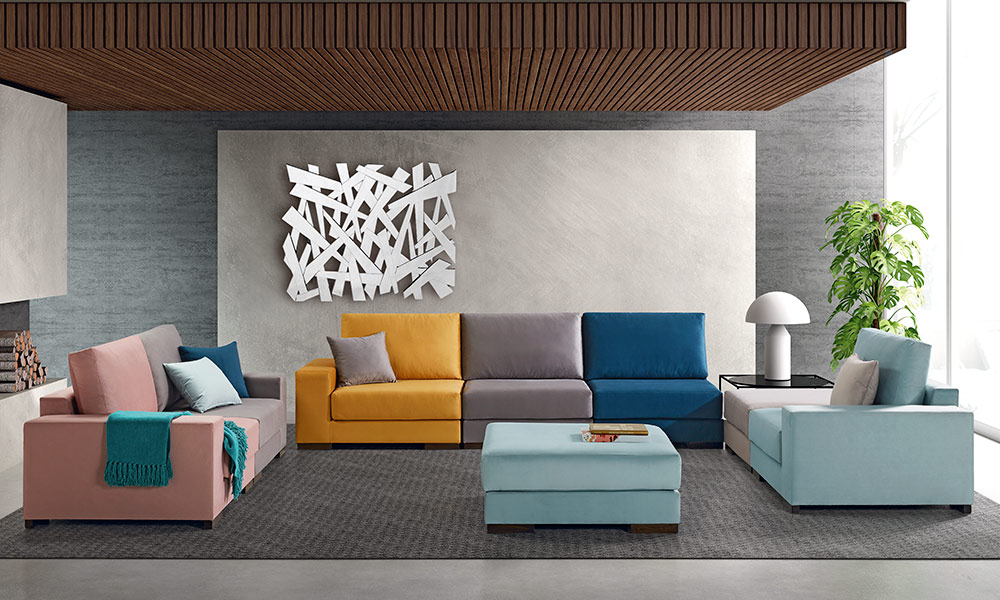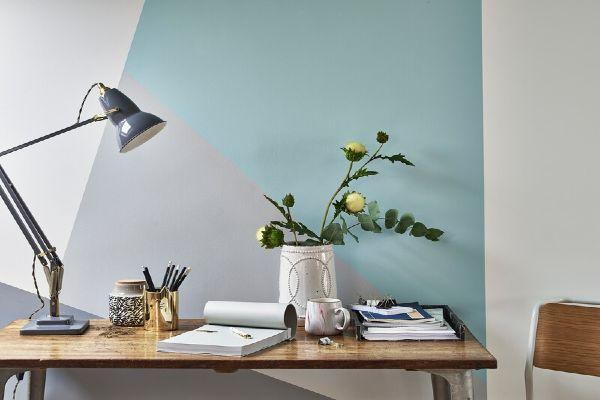
Think Beyond Walls – Creative Color Blocking Ideas for a Vibrant Home
Color blocking is a powerful design technique that adds vibrancy, contrast, and personality to any space. Traditionally used on walls to create striking visual effects, this method can extend far beyond wall treatments. From furniture and flooring to decor accents and textiles, color blocking can breathe new life into a home or workspace. By thoughtfully incorporating bold hues and unexpected color pairings, you can redefine how a space feels and functions. Whether you’re looking to make a small space feel dynamic or add character to a neutral palette, color blocking offers endless creative possibilities.
What is Color Blocking?
Color blocking involves using bold, contrasting colors in large sections to create a dramatic and cohesive look. This technique originates from the fashion world but has seamlessly transitioned into interior design, allowing for endless creativity. By carefully selecting colors that complement or contrast, color blocking can create energy, harmony, or depth within a space.
While painted walls are a classic way to use color blocking, limiting this technique to walls alone overlooks a wealth of design potential. Applying color blocking to furniture, flooring, ceilings, and accessories can create a dynamic, layered aesthetic that enhances any space. By integrating this technique into unexpected places, you can bring a fresh and contemporary feel to your interiors.
Creative Ways to Use Color Blocking Beyond Walls
One of the most impactful ways to incorporate color blocking is through furniture. A color-blocked sofa with contrasting upholstery or a dining table with multicolored legs adds character without overwhelming the room. Chairs, bookcases, and side tables with bold sections of color can serve as statement pieces that bring vibrancy and depth to a space.
Color blocking isn’t just for vertical surfaces—it works wonders on floors too. Using different-colored tiles, rugs, or even painted wood planks can define areas within an open-plan space and add an unexpected artistic touch. Striped or geometric designs in floor coverings can create visual pathways that guide movement through a space.
Often overlooked, ceilings present an exciting opportunity for color blocking. Painting a ceiling in a bold hue contrasting with the walls or using a gradient effect can add dimension and make the space feel taller and more expansive. Ceiling color blocking is an excellent way to bring an unexpected focal point to a room and introduce an element of surprise.
From curtains and cushions to bed linens and throws, textiles are an easy way to introduce color blocking without permanent changes. Layering complementary or contrasting colors in fabric elements helps tie a design scheme together effortlessly. Upholstered furniture with split-tone fabric can add a modern and playful twist to interiors.
Small decorative pieces, such as vases, lamps, and artwork, can subtly incorporate color blocking. A gallery wall with different-colored frames or a collection of vividly painted ceramics creates visual interest in a sophisticated yet playful way. Even items like trays, books, and decorative bowls can be used to introduce pops of color that enhance the space.
Strategic Color Pairings for Maximum Impact

When choosing colors for blocking, it’s important to understand the difference between complementary and contrasting hues. Complementary colors sit opposite each other on the color wheel (like blue and orange), while contrasting colors create high visual impact when placed together.
For a refined take on color blocking, stick to varying shades of the same color. This creates a cohesive and calming effect while still maintaining a visually engaging space.
For those who love adventurous designs, experimenting with unconventional color combinations—such as mustard yellow with deep teal or coral with emerald green—can result in a standout look that feels fresh and contemporary.
Color Blocking in Different Design Styles
- Modern minimalism with a pop of color. In minimalist interiors, color blocking can break the monotony of neutral tones. A single bold piece, like a striking chair or bookshelf, adds personality without overwhelming the simplicity of the space. Shades of blue, green, or earth tones can bring a sophisticated elegance to interiors.
- Mid-century modern appeal. Mid-century design thrives on geometric shapes and bold hues, making it a perfect match for color blocking. Vintage-inspired furniture with contrasting upholstery or geometric-patterned rugs reinforces this aesthetic beautifully. Incorporating classic mid-century tones such as burnt orange, olive green, and mustard yellow adds authenticity.
- Playful and Eclectic Vibes. For an eclectic approach, mix various bold hues with patterns and textures. Mismatched but carefully curated elements bring a fun and artistic flair to a room. Layering different materials and experimenting with high-contrast colors create a vibrant and personalized space.
Practical Tips for Executing Color Blocking
If you’re new to color blocking, begin with smaller elements like accessories or a single piece of furniture. This allows you to test combinations before committing to a full-scale color-blocked space.
To avoid overwhelming a room, balance bold colors with neutral tones. Incorporating white, beige, or light gray helps anchor the design and ensures a sophisticated look.
Consider the emotional impact of colors when selecting your palette. For example, warm tones like red and yellow energize a space, while cooler hues like blue and green promote relaxation. Understanding how different shades influence mood can help create an environment that aligns with your lifestyle and design goals.
While color blocking encourages bold choices, maintaining a sense of cohesion throughout your home is important. Ensure that different areas flow together by repeating certain hues in various elements across rooms. Integrating colors throughout your space creates a harmonious and well-curated look.
Conclusion
Color blocking beyond walls offers endless possibilities for creating dynamic, personality-filled interiors. Whether through furniture, flooring, textiles, or decor, this design technique allows for creative expression in any space. By strategically pairing colors and balancing bold hues with subtle tones, you can achieve a stylish and harmonious home that stands out in the best way possible. Ready to take your space to the next level? Start experimenting with color blocking today and watch your interiors transform!
